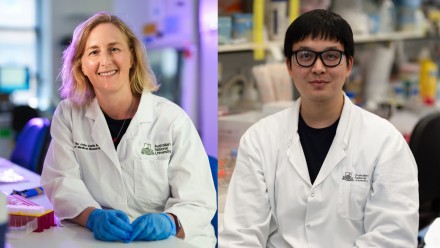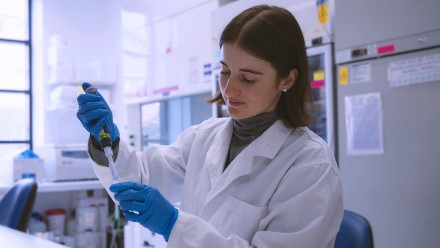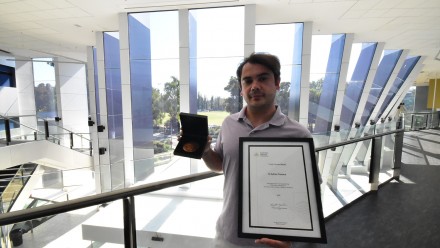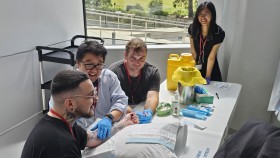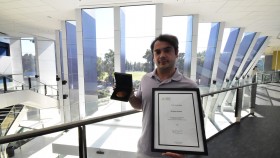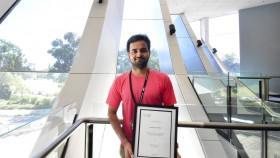ANU-Genentech collaboration identifies new gene in pathway to sepsis
Researchers at Australian Phenomics Facility (APF), The John Curtin School of Medical Research (JCSMR) in collaboration with Genentech, a leading U.S. biotechnology company, have discovered a new gene, Gasdermin-D, which is involved in a biochemical pathway in the body that can lead to sepsis.
Sepsis is a severe, whole-body infection that kills an estimated one million people in the United States each year. It occurs as a complication to an existing infection, and if not treated quickly, it can lead to septic shock and multiple organ failure, with death rates as high as 50 per cent.
The team at The Australian Phenomics Facility employed a large-scale forward genetics discovery platform to screen thousands of genes for those involved in a self-destruct pathway of cells, called pyroptosis, that can lead to sepsis.
JCSMR Director Professor Simon Foote said it was a triumph for the team to isolate this new gene so quickly, and acknowledged the vital support of the Australian Government’s National Collaborative Research Infrastructure Strategy.
Researchers were aware that sepsis occurs when molecules known as lipopolysaccharides (LPS) on the surface of some bacteria infiltrate cells, triggering an immune response that causes the cells self-destruct. But exactly how the self-destruct button was pressed remained a mystery.
Scientists at Genentech showed that Gasdermin-D usually exists in cells in an inactive form. When the LPS molecules enter the cells they trigger an enzyme called caspase-11, a kind of chemical hatchet, to lop the protective chemical cap off Gasdermin-D, which in turn leads the cells to self-destruct.
Nobuhiko Kayagaki, Ph.D., Senior Scientist from Genentech, said “The identification of Gasdermin-D can give us a better understanding not only of lethal sepsis, but also of multiple other inflammatory diseases”.
“This finding is a key that could potentially unlock our ability to shutdown this killer disease before it gets to a life-threatening stage,” said Professor Chris Goodnow, from The Australian National University and Garvan Institute of Medical Research.
The research is published in Nature
Pictured: Members of the APF team





